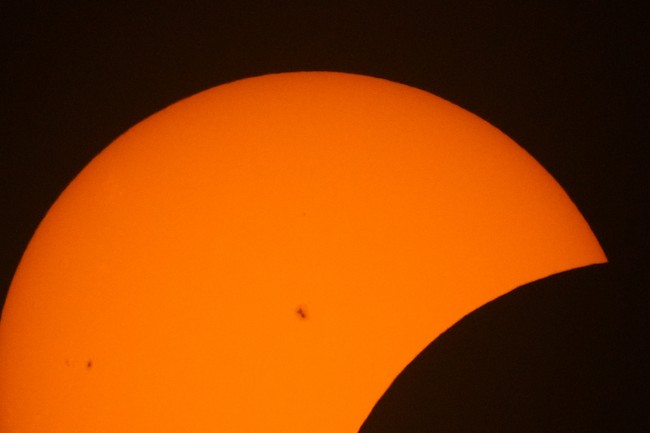CA Burning: One of World’s Largest Lithium Ion Battery Storage Plants Bursts Into Flames
This post was originally published on this site

This doesn’t seem as if it’s merely chickens coming home to roost in California, whatever size of the massive flock.
It’s going to feel like every kettle of vultures, condo of condors, and murder of carrion crows has set up house in the air above, just waiting for an open spot to glide in and feast on yet another casualty smoking in the wreckage.
Advertisement
The ‘Oh, it’s climate change!’ excuses started falling as fast as the flames raced down hillsides. Santa Ana winds have always happened. Fires in Los Angeles have always happened.
The 1938 fires burned more than 50,000 acres and destroyed lots of Hollywood actors homes. This year’s LA fires have burned about 40,000 acres. It is not “climate change” – but rather the normal climate of California.https://t.co/4YbBq2kFHn pic.twitter.com/106XZnTwtS
— Tony Heller (@TonyClimate) January 17, 2025
It’s always been a question of what the people in charge have done to protect the state’s residents from the normal conditions the state is subject to, be it 1938, 1962, 2024, or any year in between.
Have those officials and department officers exercised their sworn duty to the utmost of their ability to protect and defend the citizens in their care from harm, or have they squandered the resources available to them to do so in pursuit of vanity projects and unicorn farts?
21 days before the Palisades Fire broke out, Los Angeles Fire personnel jammed into a LA Fire commission meeting with a dire warning about the consequences of Karen Bass’ budget cuts.
“The residence of Los Angeles are going to pay the ultimate sacrifice, and someone will die.” pic.twitter.com/RpHN9yOziq
— Kevin Dalton (@TheKevinDalton) January 16, 2025
The answer is obvious and damning.
Gold doesn’t tarnish, but it sure can melt.
Take a drive down Pacific Coast Highway in Los Angeles, California after the Pacific Palisades fire
Governor Gavin Newsom and Mayor Karen Bass must be held accountable for this
This was one of the most iconic drives anywhere in the world. LA history gone. pic.twitter.com/OEcxtwmYGm
— Wall Street Apes (@WallStreetApes) January 15, 2025
Advertisement
The flames of destruction can have more than one source. Uncontrolled, uncleared, tinder-dry brush on a wind-ravaged hillside in a city obsessed with funding DEI and progressive social projects over providing basic safety nets for citizens is a lethal combination that eventually erupts, exposing the folly of favoring fads over competence.
Pursuing expensive and unreliable unicorn fart renewable power generation schemes while blithely destroying the tried and tested old reliable – but suddenly out of vogue – power plants before there are proven replacement backups available is the height of arrogance and disregard for public welfare and safety.
Yet, CA has been at the forefront of demolishing dams that provide not just precious drinking water but hydro electrical power, as well as the nuclear reactors, natural gas, and coal power plants that keep the lights on when Newsom and Co.’s much-touted renewables fail to measure up, as they so often do, to the power demands of weather and life in an active, vibrant state with a massive population.
A population that oleaginous Newsom and his fellow climate cult grifters have put at increasing risk with their dogged determination to embrace NetZero goals at whatever costs to residents. Those costs, astronomic as far as dollar figures, are also hideous in terms of quality of life impacts, such as power outages and brownouts in a state that never had those before.
Or the sudden appearance of massive and deadly dangerous lithium-ion ‘battery storage facilities’ near or in residential areas. These lethal monstrosities attempt to hold some of the power produced by the erratic operation of the solar and wind farms, destroying the landscapes and precious, formerly pristine wild areas California’s officials used to pretend mattered to them more than life itself.
Advertisement
GOOD TIMES, GOOD TIMES
All that burst into flames at around 3 pm yesterday afternoon in Monterey, CA, about 320 north of Los Angeles.
Only a few hours later, it was apparent something in one of the world’s largest lithium-ion battery plants – at Moss Landing – had gone really wrong.
Sabotage? Vistra Energy 700MW lithium battery storage plant at Moss Landing on fire after explosion. This California power plant is the largest of its kind.
PG&E Elkhorn 182.5MW lithium Tesla Megapack storage is located on the same site. pic.twitter.com/XchDVM85Wn
— Gary Mark⚡️Blue Sky Kites 𝕏 🈴 (@blueskykites) January 17, 2025
(The nearby Tesla storage is fine, contrary to what the MSM has tried to imply.)
As of 11 pm last night, 1500 residents had been evacuated, roads in the area were closed, including iconic Highway 1, and fire crews were still waiting this morning for the fire to burn itself out.
Flames continued to spew early Friday morning in the community of Moss Landing and the Elkhorn Slough area in northern Monterey County after a major fire at a battery storage plant that brought evacuations.
The fire closed Highway 1 and raged out of control Thursday night, sending up huge flames and clouds of hazardous black smoke. It was reported around 3 p.m. at the plant, located on Highway 1, Monterey County spokesman Nicholas Pasculli said.
…At 11 p.m. Thursday, the county’s emergency alert system advised residents to stay indoors, keep their windows and doors closed, turn off their ventilation systems and limit outdoor exposure. There were no updates early Friday.
Evacuations of about 1,500 people were ordered for areas of Moss Landing south of Elkhorn Slough, north of Molera Road and Monterey Dunes Way, and west of Castroville Boulevard and Elkhorn Road to the ocean remained in place, Pasculli said.
“It’s imperative that residents heed the evacuation order and take the direction of law enforcement and fire personnel,” he said. “This is a situation where we take the idea of protecting life and property very seriously. We implore people to heed the evacuation order and to go to a safe location.”
Advertisement
THERE ARE A LOT OF BATTERIES IN THERE
…“It’s a major incident,” he said. “All the resources in the county and our neighboring jurisdictions have been deployed to assist with this incident.”
The facility, owned by Vistra Energy, a Texas company, is one of the largest battery storage plants in the world. It holds tens of thousands of lithium batteries, which are used to store electricity from solar power and other sources generated during the day for use at night. Such battery storage plants are a key part of California’s efforts to shift most of its electricity generation to renewable sources.
“There’s no way to sugarcoat it. This is a disaster, is what it is,” Monterey County Supervisor Glen Church told KSBW-TV. “This is extremely disconcerting.”
Church said the fire was “contained” inside a concrete building whose roof had collapsed.
“We don’t think there’s any real threat of it extending outward and getting beyond where it’s in,” he said. “There are a lot of batteries in there, and it’s burning pretty much inside that facility.”
Yes, it’s a ‘disaster,’ as the county supervisor says, from both a local and environmental aspect, much like we discussed when the facility outside of San Diego went up. All the toxins in the air and those that will be eventually washed into the watershed around Monterey – another one of those ‘pristine’ areas Californians so used to treasure. Who knows what the clean-up and impacts will look like once it can even begin?
The greater concern for some right now is California’s fragile electrical grid. This facility was the main storage plant for excess solar power produced and used to stabilize the grid when loads turned heavy at night.
🔥 😱 🔥 BIG NEWS: Massive fire at the world’s largest lithium battery storage facility in the WORLD, of course in @GavinNewsom run California!
In addition to making it impossible to use solar power during evening periods, it’s releasing VERY toxic heavy metal smoke.
— Houman David Hemmati, MD, PhD (@houmanhemmati) January 17, 2025
Advertisement
If they’ve lost that, and they’ve turned so many backup alternatives off permanently…whacha gonna do when people need power, Gavin?
Beege Adds: I found a little more information in an industry publication about what exactly the Vistra plant at Moss Landing has and what its loss potentially means for the stability of the California electrical grid. And according to this piece, it is ‘the world’s largest.’
Owner Vistra Energy has announced the completion of work to expand its Moss Landing Energy Storage Facility in California, the world’s largest lithium battery energy storage system (BESS) asset.
…An additional 350MW output and 1,400MWh energy capacity has been added to the plant, bringing it to a total 750MW/3,000MWh.
This comes after the 300MW/1,200MWh Phase I was completed in 2020, followed by the addition of another 100MW/400MWh in Phase II the following year.
As with the first two phases, offtaker of the new batteries will be California investor-owned utility (IOU) Pacific Gas & Electric (PG&E). The utility has contracted with Vistra for resource adequacy (RA), the California mechanism for ensuring electric load-serving entities in the state deliver energy reliably to customers and with sufficient supply.
RA is the main reason for California becoming a world leader in grid-scale BESS deployments. The fact that battery developers can secure long-term contracts with associated revenue streams from electricity supplier offtakers has seen the market surpass 5GW in the main CAISO grid service area.
RA requirements include delivery of electricity in four-hour blocks, which is why most new-build battery storage facilities in the state have durations of that length.
PG&E’s new contract for Moss Landing Phase III, also known as MOSS350, is under a 15-year term and was approved by California regulators in April 2022.
Advertisement
So this plant has a 15-year contract to pick up PG&E shortages and can do so in up to four-hour blocks of extra go-juice.
Just look at the number of batteries that were added in the expansion. Crimeny.
…Vistra Energy noted that the expansion was completed on schedule within a 16-month timeframe, adding more than 110,000 battery modules in 112 containerised units. It comes after the company reported in May that the expansion was on track, as it announced its most recent financial results.
The plant had been approved for another expansion to 1.5GW, so basically, a doubling of where it burns…oh. Sorry. Stands size-wise right now.
Wonder if the neighbors are rethinking voting for their local commissioners about any of this?
To give you an idea of how critical these horrific things are to the self-inflicted fragility of the CA grid, I found an illustrative story about the smaller Tesla unit at the same site.
…“It’s a win-win-win,” Doherty said. “It’s more affordable energy, it’s cleaner energy, and it helps the state in meeting the needs of the grid, you know, especially in periods like the summertime peak demand when there’s potential shortages of energy.”
The Elkhorn Battery system participates in the California Independent System Operator wholesale electric markets, which manages the flow of electricity for about 80% of California.
To illustrate what the facility means for customers and state energy storage in real-time, Poppe cited a system success story from its short stint actively operating. Just 10 days after connecting to the grid in April, Elkhorn saw a midday charging cost of about $10/megawatt-hour, when the system had “ample, abundant, renewable clean energy resources,” Poppe said. Meanwhile, at peak demand, power was selling at $100/megawatt-hour, but Elkhorn already had reserved power to dispatch.
“That saves money for our customers and brings clean energy that otherwise would have been a diesel-generated, fossil fuel-powered resource,” said Poppe. “People, I think sometimes, speculate that California is going too far with clean energy. Heck no, we’re just getting started, and a facility like this makes it possible.”
Advertisement
Heh. Who’s riding to the rescue now?
